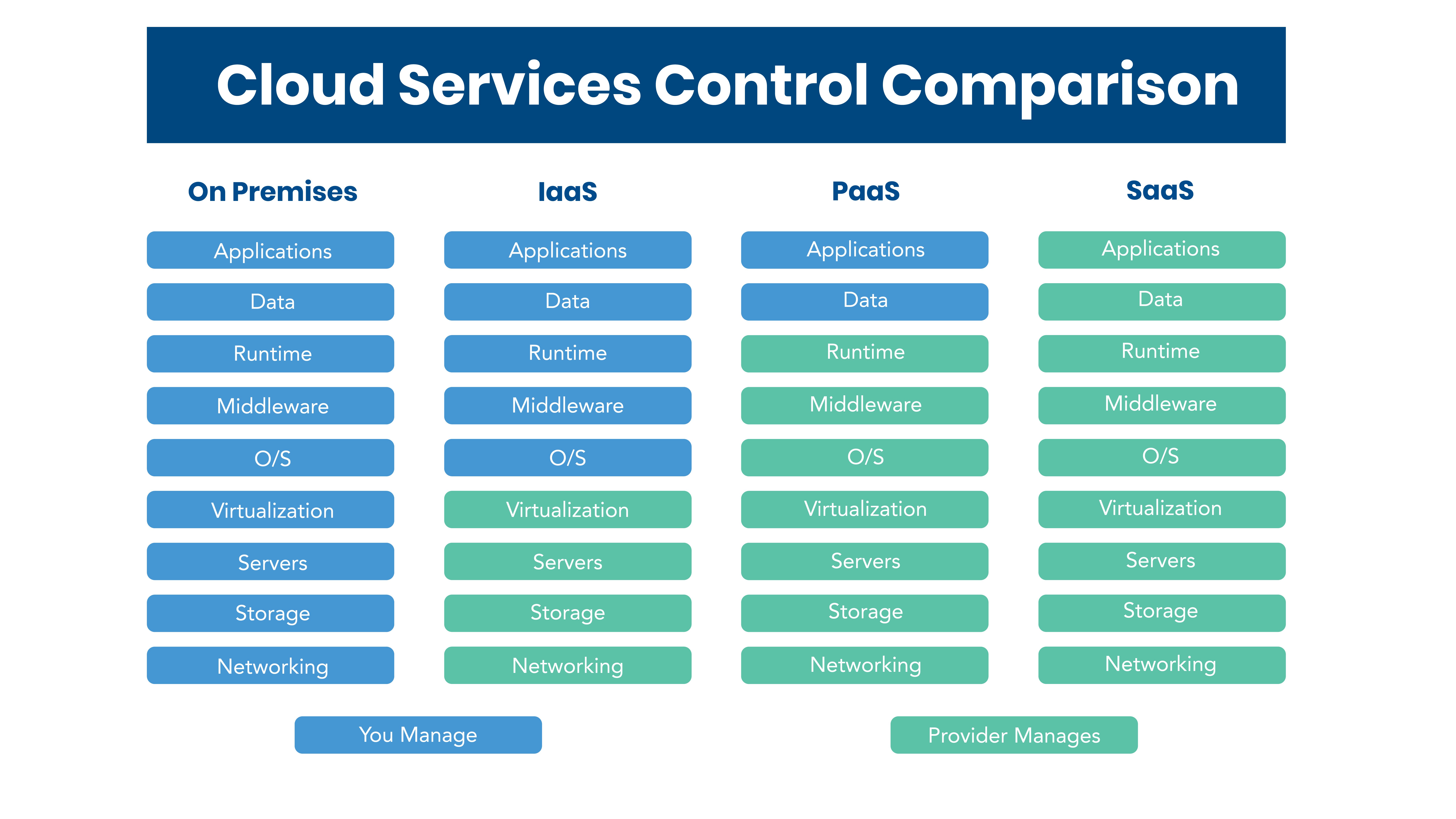The term “Cloud” has gained a massive amount of notoriety within the past two decades. Used in reference to a variety of applications, including data storage, app downloading, or simply as a means to access the internet, colloquial uses of the Cloud have become integrated in regular vernacular. Even if you aren’t involved in the IT industry, chances are you’re at least somewhat aware of how heavily our digital lives are governed and facilitated by the features and services made available through the Cloud.
But what actually is the Cloud? With that in mind, any cursory research into what encapsulates the Cloud would reveal that practically all internet data is hosted in the Cloud one way or another, while a deeper investigation reveals a comprehensive global platform that is essentially responsible for all our online interactions. Anything of sufficient grandiosity is inherently complex, which is why in this article we will try to explain in a digestible way what the Cloud is and how it is classified.
Why the Cloud Was Created
Average technological proficiency has grown in leaps and bounds since personal computers became widely available. Most everyone is in some way familiar with how computers function and how to easily interact with them. Installing programs, applications, and tools to meet our regular needs is common knowledge, as well as understanding how to store different types of information in readily accessible areas for future use. These properties are available to everyone who uses a computer, and for a vast majority of the population all they need is a single desktop or laptop to meet those quality of life requirements.
But let’s think of the bigger picture. For the individual, a single laptop will cover most if not all their daily necessities. What about with a company, from small business to enterprise level? These entities make use of multiple computers, each containing a different set of features, tools, and resources for their employees to facilitate the working process. The more resources and endpoints you add onto your network, the most complex management, scheduling, maintenance, and tasks become. You’re saddled with the responsibility of caring for an entire network of multiple computers simultaneously in addition to the variety of stored information, programs, and features contained on each, keeping them updated, protected, and secure.
Like with the Cloud in its infancy, this network management started small and simple. LAN networks had their own issues, but overall management was compact in its own way. As companies grew, and technology became more sophisticated, network management developed into increasingly complex structures. The solution of choice for these problems was to purchase computer equipment with huge management capabilities called “servers”.
In order to prevent future unexpected growth, companies purchased more than they needed to increase their computing capacity. These redundancies, all of which consisted of oversized and costly equipment, often went unused with up to half of the equipment never seeing activity. As a result, these investments in computing technology ended up becoming enormous and unnecessary expenses on the company’s budget.
Suffice to say, there needed to be a better solution than bulky network infrastructures that end up being wastes of both space and expense.

When It Started
After Y2K, near the beginning of the new millennium, changes started gaining momentum in how online networking could be accomplished. A growing technology company, Amazon, realized that it only used about 15% of its computing capacity. With 85% of their servers available with no meaningful way to utilize it, they decided to commodify their own network. Amazon might not have had any use for their excess computing power, but other companies certainly would.
This realization gave birth to the concept of Cloud hosting platforms, decentralized and purely online network structures for lightweight and efficient infrastructure development. The remaining computing capacity became known as Amazon Web Services, which based its strategy on offering services depending on the customer’s needs. Since then, Amazon’s Cloud hosting strategy has had such a long-standing impact that the company has developed into one of the world’s largest technology companies.
Amazon’s move paved the way for countless other Cloud service providers to revolutionize the industry, providing numerous online platforms that enable companies to pick and choose the best fit for their business. Now, with less emphasis on costly and cumbersome on-premise data centers and physical infrastructures, companies are provided with versatile, scalable, and cost-effective online cloud services as driving tools for success and growth.
Cloud Services Examples
What we’ve provided is a brief and basic context for the Cloud, but we’re really only scratching the surface of what it offers. The Cloud offers several options that can be leveraged to your company’s benefit, each delivering unique frameworks, resources, tools, and approaches to supporting your company’s infrastructure. Let’s go over a few of the primary services offered through the Cloud.
For ease of access, each of these examples comes from the perspective of someone interacting with a real estate company.
On-Site/On-Premise
The first real estate company offers us an available lot, which we then purchase. From there, with complete ownership over our own property, we allocate necessary resources to construct our corporate infrastructure: houses, offices, apartments, etc. We have full agency over the design and development of our lot, but the obvious drawback is that the onus of development is entirely on our shoulders. Since it is our property, we are forced to allocate a significant initial amount to the constructuction of facilities and necessary inputs.
Setting things in stone leaves little room for future development of existing infrastructures. The buildings we construct now could prove to eventually become obsolete, making any future changes costly and time-consuming. This lot may be our own and entirely accessible to our people, but maintenance, development, and regulatory compliance leads to our company spending much more than initially budgeted.
This Cloud model is known as On-site or On-premise.
IaaS (Infrastructure as a Service)
Our second real estate company provides several rentable lots that include all the basic services already included, in addition to various constructed infrastructure services such as houses, offices, apartments, and so on. Since this lot is not owned by us, our capacity for modifying it to fit our needs is more limited than other real estate options may provide. An already established infrastructure, however, brings multiple benefits to our company.
While we may not be able to modify much of the existing infrastructural construction, we can pay for extra required services to align this lot’s offerings with what our company needs. From here on out, we are in charge of managing the people who live or work on this property, as well as the resources needed for continuing operations. Our control over the overall construction and design may not be as broad as we’d like, but we also don’t have to contend with added expenses associated with maintenance and upkeep.
This type of model is known as IaaS (Infrastructure as a Service).
PaaS (Platform as a Service)
Heading over to the third real estate broker, there are several lots for rent, all of which have the basic services available and come equipped with fully functional architectural infrastructure with everything needed included for dedicated service offerings. There’s not much leeway afforded in conforming the extant framework or services to fit your company’s needs since everything is already accounted for, leaving your company to focus on managing your people and resources. Without the need to manage every facet of your infrastructure, your company can prioritize its core competencies.
This model is known as PaaS (Platform as a Service).
SaaS (Software as a Service)
The fourth and final option already has construction and services completed and included in addition to the personnel and resources necessary for operation. Not only that, but they come with an existing target audience, meaning the company only needs to provide the service and offers no control over resources, construction, or other operational costs.
This model is known as SaaS (Software as a Service).
Types of Cloud Services
The Cloud service offering your company eventually springs for has huge implications for your level of control, resource allotment, operations, and other related variables that determine governance over your own infrastructure and network. The descriptions of each of these services have already been provided in broad terms, but now we’re going to explain in greater detail the actual services managed by each.
As a rule of thumb, greater control over your network means greater expense and responsibility on your teams. With limited control and a greater emphasis on your Cloud service provider managing the network assets, your company is less liable for maintenance and associated costs while allowing you to focus on your own service offerings. Essentially, there’s a clear tradeoff between control, responsibility, and expense.
It’s more easily summed up in this image:

On-Site: The client is in charge of all the resources. Everything from location to technology to management is entirely the client’s responsibility, providing room for customization while increasing total cost of ownership.
IaaS: The client is in charge of managing: Applications, Data, Runtime, Middleware, and O/S. The service provider manages: Virtualization, Servers, Storage, and Networking. With IaaS service offerings, the client is provided with basic infrastructural utilities, providing them with less maintenance responsibilities while allowing greater leeway over dedicated resources for operational management.
PaaS: The client manages only: Applications and Data. The provider manages the rest. Your personnel and resources are still your responsibility, but all infrastructural design and management is not controlled by your teams, instead being handled entirely by the Cloud service provider. This entails limited to no responsibility over infrastructure management and maintenance, which minimizes cost of ownership while removing your capability to proactively curate your platform design to your needs.
SaaS: The customer only uses the service without taking into account its operation. The provider is in charge of managing everything. As the most barebones Cloud service offering, it leaves your company with no control over your platform. While it removes the versatility and customization options available through other offerings, it also means your teams don’t have to tackle network maintenance and security protocols, decreasing cost of ownership to a minimum.
Main Service Providers
Considering where Amazon now sits in comparison to the largest companies in the world, it's apparent that the Cloud is the future. As the Cloud grew in relevance, power, and applicability on the large-scale IT stage, other tech giants followed suit in Amazon’s footsteps. Now, decades later, numerous technology companies are offering competitive Cloud services that broaden the playing field for companies looking to invest in online infrastructure, resources, and platforms. There are three leading players in the Cloud service offering industry: Microsoft Azure, Amazon Web Services, and Google Cloud Platform.
Microsoft Azure
Microsoft may have been one of the instigating forces for popular modern computing technology, but it wasn’t a frontline presence on the Cloud scene. Relatively speaking, Microsoft started late in the Cloud services game, putting them at a disadvantage to already established presences in the industry. However, despite a late start, Microsoft Azure gained power and widespread usage in a very short time, catapulting them to a leading role among companies that offer the most comprehensive Cloud services available on the market.
Amazon Web Services
Amazon was a pioneer in terms of offering Cloud services, acting as one of the initial Cloud platform providers to break ground on the industry. While many other service providers have come and gone since the Cloud’s inception, Amazon Web Services has remained as one of the most popular service providers globally, delivering a huge catalogue of services without sacrificing strength, compatibility, or intuitive design, helping companies of any size meet their demands.
Google Cloud Platform
Like Microsoft, Google arrived late to the Cloud service provider industry, entering relatively recently after Amazon’s pronounced success. Centralizing service and simplifying data management, network maintenance, and design practices helped ingratiate Google Cloud Platform to a wide variety of clientele. Now, it’s one of the premier options for Cloud services, owing to its significant growth since founding and a large supply of resources.

Conclusion
Knowing the history and inciting reasons for why impactful innovations develop informs why we needed them in the first place. Seeing how Cloud services emerged, how they gained prominence, and how they are driving modern markets offers crucial insights into how they benefit your company and guide decision making processes. We covered the basics of Cloud platform services, including how they developed into the modern iteration we’re familiar with today, and detailed the classification of each service with examples on their function, purpose, and utility for contemporary network infrastructures. In that vein, you’re better able to understand how they’re managed and best practices for effectively deciding which Cloud service is the best fit for your company’s needs, goals, and restrictions.
The main Cloud providers that dominate the industry - Microsoft, Amazon, and Google - are only a few Cloud service providers available, meaning there are hundreds of options to choose from if you find none of the leading contenders quite fit what you had in mind. The Cloud is an enormous entity, capable of innumerable functions, applications, and designs, so much so that it would be impossible to comprehensively cover in a single article. What we sought to establish were the groundwork bases wherein all Cloud service providers are based, offering you deeper insight into each Cloud provider as well as the services they offer.
Let’s be honest with ourselves: the pandemic brought with it massive change, both for the worse and for the better. It’s affected everyone in shared and wildly different ways, and the changes have been felt in every industry, not the least of which is the technology industry. There’s a new normal, where companies are leveraging remote workers more predominantly, offering an alternative to traditional working structures, where the Cloud plays a huge role. This means there will be greater demands for engineers with the skills necessary to manage the Cloud. Why not take the opportunity to learn all you can about how it works?
Improving is a leading firm across the United States and Canada for digital services and outsourcing, including QA and testing. We are now also including operations in Mexico with a nearshore delivery model service offerings. If you want to learn more about what we can do for your company, visit us at our contact page.

-1.png?width=1200&name=SM_03_21_Art_01%20(1)-1.png)

Post Your Comment Here